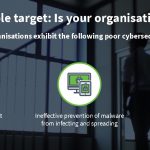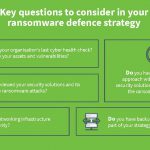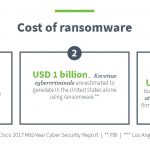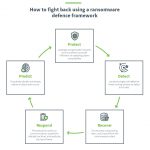Dimension Data, the global ICT services and solutions provider, and Cisco, have joined forces and published a White Paper to help organisations stay ahead of ransomware threats. Called Ransomware: The Pervasive Business Disruptor the paper looks at ransomware trends and impacts, and how to respond before a threat becomes a business disruptor.
According to a Cisco’s 2017 Mid-Year Cyber Security Report, ransomware is one of the main threats to digital business. Globally, around 49% of businesses experienced at least one cyber ransom attack in 2016, and of those, 39% were ransomware attacks. In the US alone, the number of attacks rose 300% from 2015 to 2016.
This trend can be attributed to the growth of Ransomware as a Service (RaaS) in the first half of 2017, where cybercriminals pay the operators of RaaS platforms to launch attacks.
“The escalation in ransomware attacks in the digital economy makes every organisation a target,” says Matthew Gyde, Group Executive – Security. “This risk escalated when cryptocurrency and bitcoin became a common avenue for ransom payment. That’s because cybercriminals cannot be traced. And as more employees work remotely on personal devices, the risk is further compounded.”
“Deep threat intelligence and research are key to outsmarting cybercriminals, and a critical success factor is to disrupt the attack before it becomes the business disruptor,” Gyde explains. “But security controls alone are not sufficient to address a ransomware threat, and organisations need to adopt a multi-layered approach to stop the cyber kill chain. This means identifying emerging threats before an attack, quick detection, a swift response to an attack, all the way through to the backup and recovery process.”
“Middle East organisations need to be aware of the rapid growth of Ransomware as a Service in the first half of 2017, where threat actors with malicious intent pay operators of Ransomware as a Service platforms to launch such attacks. The growth of digitally connected global enterprises means that no single country can remain isolated. It also means that enterprises in the Middle East can expect more sophisticated attacks, more frequently, and with more unpredictability going forward. The only protection for them is to follow more rigorous security protection measures,” adds Mechelle Buys Du Plessis, Managing Director, Dimension Data Middle East.
The ransomware White Paper includes a six-point framework for organisations to adopt to defend against a ransomware attack:
• Predict and be informed before the attack occurs: Proactively research what’s discussed on the Dark Web, new exploits that will be used, and industries or companies that will be targeted.
• Protect: Identity and access management (IAM) tools are essential to protecting enterprise devices and computing assets. Network access control (NAC) ensures that only devices that have the adequate security settings and adhere to IT security policies are able to access corporate systems.
• Detect: Technologies should be in place to detect anomalies in the infrastructure, in the event that malware has infiltrated the endpoints or network. The network must be monitored to check for indicators of compromise. Turning on AI-enabled malicious traffic detection can also help automate detection swiftly before the attack worsens.
• Respond: When a ransomware incident has been detected, security experts must work fast to block malicious communication channels at the firewall or IPS, and quarantine infected machines.
• Recover: Backup is a critical part of the strategy for fast recovery. In addition, the backup system needs to prevent the replication of files that were maliciously encrypted by ransomware. This can be achieved with dynamic segmentation and inherent security features.
“Recent ransomware attacks have highlighted the fact that improvements are needed in any industry or any size of the organisation. With the right framework, tools and processes, companies will become better equipped to disrupt the ransomware attack before it becomes the business’ disruptor,” says Gyde.
Click here to read Ransomware: The Pervasive Business Disruptor White Paper.






